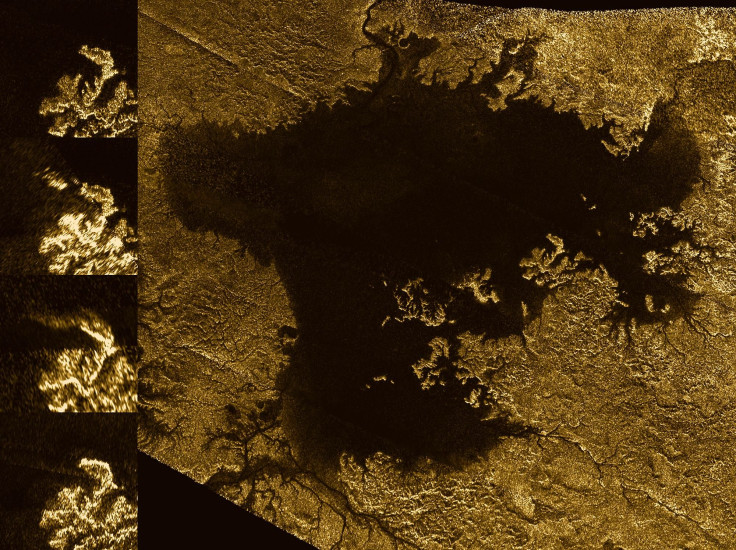Saturn's Moon Titan May Have Bubbly Lakes Fizzing With Nitrogen

Saturn’s largest moon Titan is a truly alien world. It is the only other world known to us where lakes, rivers and waterfalls play a crucial role in shaping the surface, but unlike those on Earth, these are made of methane and ethane — the presence of which has led scientists to speculate about the existence of nonwater-based life forms.
A series of experiments carried out by NASA scientists has further expanded our understanding of the surreal beauty of the alien landscape. They have indicated that on Titan, hydrocarbon lakes may occasionally “breathe” nitrogen.
“Our experiments showed that when methane-rich liquids mix with ethane-rich ones — for example from a heavy rain, or when runoff from a methane river mixes into an ethane-rich lake — the nitrogen is less able to stay in solution,” Michael Malaska, a scientist at NASA’s Jet Propulsion Laboratory in Pasadena, California, said in a statement. “As they cool, they can absorb more of the gas, ‘inhaling.’ And as they warm, the liquid's capacity is reduced, so they ‘exhale.’”
An Earth-based analogue of this phenomenon would be the absorption and release of carbon dioxide by oceans. As an ocean's temperatures rise, its ability to retain dissolved carbon dioxide decreases and the gas leaks out, which NASA says is “like a glass of root beer going flat on a warm day.”
“A fizzy liquid could also cause problems, potentially, for a future robotic probe sent to float on or swim through Titan's seas,” NASA said in the statement. “Excess heat emanating from a probe might cause bubbles to form around its structures — for example, propellers used for propulsion — making it difficult to steer or keep the probe stable.”
Although NASA has unveiled tentative plans to design and send a submarine to investigate Titan’s hydrocarbon seas — especially the gigantic Kraken Mare — it would be years before these plans materialize. Until then, scientists hope that the data still being gathered by Cassini, which is scheduled to make its next close flyby of Titan on April 22, would continue to provide invaluable insights into the secrets the moon may be hiding.
© Copyright IBTimes 2024. All rights reserved.






















